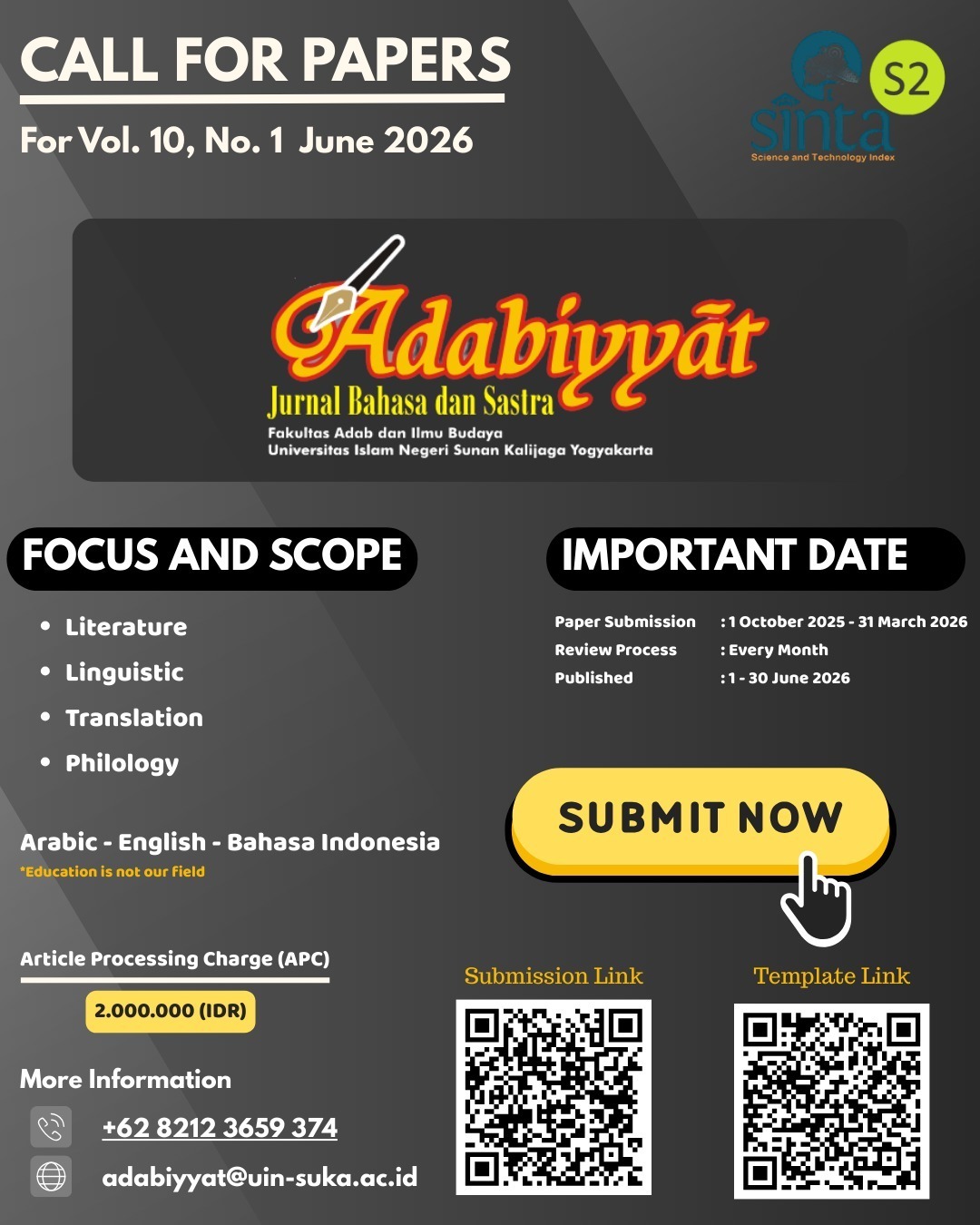INTERSEKSI MASKULINITAS DAN AGAMA DALAM CERPEN ROBOHNYA SURAU KAMI KARYA A. A. NAVIS
DOI:
https://doi.org/10.14421/ajbs.2017.01201الملخص
This research aims to find out how gender and narrative correlate to each other. Traditionally speaking, gender is only related to one of the intrinsic aspects, the character, which is usually inside the plot. Although in this short story the narrator is character-bound narrator, the narrator is not in the fabula or plot. The implication is that it can be assumed that gender plays its role. The narrator in this short story obviously gets involved in the contestation of masculinity of the characters. The method of narratology is employed to dig out all of the masculine contestation, among the main characters (Ajo Sidi and Sang Kakek/the Oldman) and the narrator. The result shows that the masculinity of Ajo Sidi belongs to the hegemonic masculinity and the masculinity of the Oldman belongs to the non-hegemonic masculinity. The contestation of masculinity represents the binary opposition between active and passive masculinity. In this respect, the masculinity of the Oldman, which is passive, can be binarized as the feminine rather than masculine one.التنزيلات
المراجع
Bal, Mieke. 2009. Narratology: Introduction To The Theory Of Narrative. 3rd Edition. Toronto: Univ of Toronto Press.
Brod, Harry, dan Michael Kaufman, ed. 1994. Theorizing Masculinities. Research on men and masculinities series 5. Thousand Oaks, Calif: Sage Publications.
Clark, Marshall. 2004. “Men, Masculinities and Symbolic Violence in Recent Indonesian Cinema.” Journal of Southeast Asian Studies 35 (1): 113–31.
Connell, R. W. 2005. Masculinities. 2nd ed. Berkeley, Calif: University of California Press.
Connell, R. W., dan James W. Messerschmidt. 2005. “Hegemonic Masculinity: Rethinking the Concept.” Gender and Society 19 (6): 829–59.
Demetriou, Demetrakis Z. 2001. “Connell’s Concept of Hegemonic Masculinity: A Critique.” Theory and Society 30 (3): 337–61.
Hellwig, Tineke. 2003. In The Shadow of Change: Citra Perempuan dalam Sastra Indonesia. Jakarta: Desantara.
Navis, A.A. 2007. Robohnya Surau Kami. Jakarta: Gramedia Pustaka Utama.
Oetomo, Dédé. 1991. “Homoseksualitas Di Indonesia.” Prisma 7 (Juli): 85–96.
Reeser, Todd W. 2010. Masculinities in Theory: An Introduction. UK: Wiley-Blackwell.
التنزيلات
منشور
إصدار
القسم
الرخصة
الحقوق الفكرية (c) 2017 Danial Hidayatullah

هذا العمل مرخص بموجب Creative Commons Attribution-ShareAlike 4.0 International License.
- Adabiyyāt: Jurnal Bahasa dan Sastra publishes all articles entirely in full text.
- It is permissible for readers to download and to use it for scientific purposes and scientific dissemination.
- The author can re-publish the article that has been published by the Adabiyyāt: Jurnal Bahasa dan Sastra after obtaining written permission from the editor. This letter can be obtained by submitting a request letter for permission to republish the article to Adabiyyāt: Jurnal Bahasa dan Sastra via email adabiyyat@uin-suka.ac.id. In the second publication, the author is required to include information that the article was firstly published by the Adabiyyāt: Jurnal Bahasa dan Sastra.




















